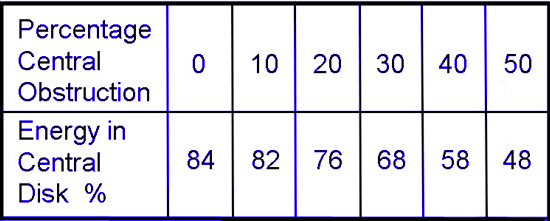DECEMBER 2023
Thoughts about Newtonians
Thoughts about Newtonians
As this article will show, Newtonians are the most versatiletelescope type but, first, some background about their “contrast”. The overall contrast of a Newtonian is boundto be somewhat less than a refractor as the two mirrors each scatter rather morelight than does a doublet lens. Inaddition, the secondary mirror of a Newtonian “diffracts” some light away fromthe Airy disk into the surrounding rings of the Airy Pattern. This reduces the contrast of faint details inthe image and can reduce the effective resolution of the viewed image. Table 1 shows the amount by which the light istransferred from the disk to the rings. A 20% obstruction has little effect and is the aim for Newtoniansdesigned to observe the planets. Forwide field imaging, a larger secondary mirror is needed to illuminate typicalcamera sensors but then the small reduction in resolution and contrast is not areal problem. So, depending on theproposed usage a Newtonian will have a range of secondary mirror sizes whosepercentage obstruction ranges from ~45% for a wide field imaging Newtonian downto ~22% for a planetary Newtonian.
